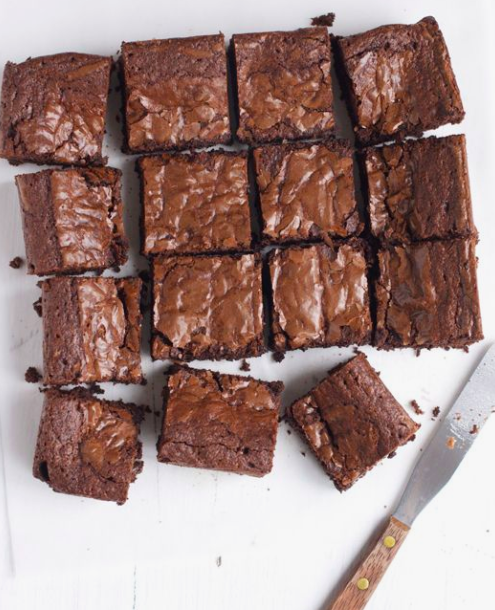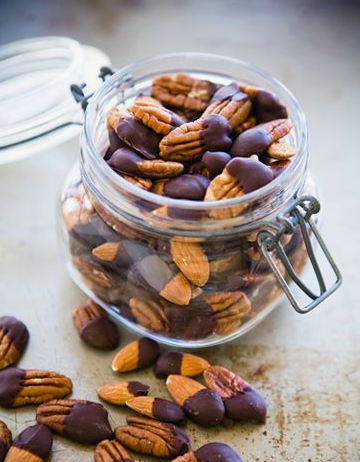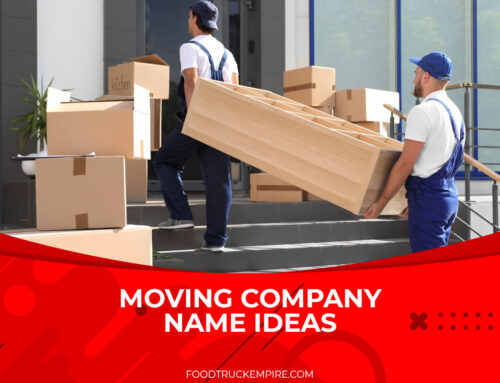Chocolate is the world’s favorite confectionery. In 2016 alone, the chocolate industry posted posted global retail sales of $98 billion. While it might seem like we’ve reached peak consumption for a product that’s been enjoyed for at least three millennia, there’s projections for further growth on the horizon thanks to developing markets.
More recently countries like China and India have developed a sweet tooth for this timeless treat as well. This provides a multi-decade path for industry growth with more consumers.
Another ongoing catalyst for growth is the flexibility of this ingredient. It can be used in beverages, foods, desserts, breakfasts, spreads and everything in between.
In this industry report, we compile statistics from the global chocolate market to offer insight into why consumers around the world can’t get seem to get enough of the stuff.
Key Facts About the Chocolate Industry
The top ten global confectionery companies that manufacture chocolate, by net confectionery sales value in 2018: (International Cocoa Organization)
| Company | Net Sales 2018 (US$ millions) |
| Mars Wrigley Confectionery, division of Mars Inc (USA) | 18,000 |
| Ferrero Group (Luxembourg / Italy) | 12,390 |
| Mondelēz International (USA) | 11,792 |
| Meiji Co Ltd (Japan) | 9,662 |
| Hershey Co (USA) | 7,779 |
| Nestlé SA (Switzerland) | 6,135 |
| Chocoladefabriken Lindt & Sprüngli AG (Switzerland) | 4,374 |
| Ezaki Glico Co Ltd (Japan) | 3,327 |
| Pladis (UK) | 2,816 |
| Kellogg Co (USA) | 1,890 |
Premium chocolate amounts to 18% of dollar sales in the global market. Though a few large companies dominate the chocolate industry, an influential group of super premium candy manufacturers contributes to the competitive landscape as well. (MarketResearch.com)

As the all-time favorite confectionery, Chocolate recorded retail sales of about 98 billion U.S. dollars globally in 2016. (Statista)
Estimated at less than 0.5% of total production, the organic cocoa market represents a tiny portion of the total cocoa market. (International Cocoa Organization)
Organic cocoa has a higher price than traditional cocoa, typically ranging from US$100 to US$ 00 per tonne which benefits cocoa farmers. (International Cocoa Organization)
Global Chocolate Consumption Statistics
Switzerland has the highest chocolate confectionery consumption per person in any other country according to industry experts. (Statista)
48% of U.S. consumers purchased dark chocolate according to a Packaged Facts’ survey last 2016. (MarketResearch.com)
Each Swiss citizen consumes about 8.8 kilograms of chocolate on the average in 2017. The U.S. comes in at 19th position with each citizen consuming 4.4 kilograms. (Statista)

Some consumers have slowed down their chocolate intake for better wellbeing, thereby looking for other foodstuff or confectionery that are more complex to keep them hooked. (AP News)
Chocolate confectionery demand in emerging economies such as China and India has witnessed exponential growth in recent years. This is due to rising consumer expenditure on indulgent confectionery products such as chocolates. (Fortune Business Insights)
Related Reading: 57 Global Coffee Industry Statistics and Consumption Trends
According to the research firm Packaged Facts, nearly 80% of U.S. adult consumers say they eat a certain chocolate confectionery. (MarketResearch)
The global consumption value of Cocoa and Chocolate increased by 5.7% average growth rate from 2012-2017. (MarketWatch)
Chocolate Market Analysis and Trends
The global chocolate market is poised to reach USD 139.94 billion by 2024 growing at a CAGR of 4.5% during the forecast period of 2019 – 2024. (Cision PR Newswire)
According to a new market research study, the worldwide market for Cocoa and Chocolate is expected to reach 63,600 million US$ in 2024, from 49,400 million US$ in 2019. (MarketWatch)
The increase in market size of chocolates can be associated with an increasing demand for premium and seasonal chocolates on certain festive seasons. Consumers progressively prefer premium chocolates as tokens as people are becoming more brand and quality conscious. (TechNavio)
In Brazil, easter is a huge selling opportunity with more than 100 million easter eggs consumed in a year and continues to grow. Meanwhile, chocolates mark a 6% growth in sales around Christmas/Hanukkah in Canada. In the past two years, the US and Germany have dominated the holiday-themed chocolate market. (AP News)
As the world’s largest chocolate manufacturer and exporter market, Europe’s diverse market is an interesting market for cocoa. (CBI.EU)
North America and Europe have traditionally remained as the dominating regions for the cocoa and the chocolate market. (Fortune Business Insights)
Local flavor fusion, stronger health claims, smaller sizes, increased transparency, and personalization is expected to contribute to the growing revenues in the global market. (AP News)
In 2017, the molded chocolate segment dominated the market and is the most consumed chocolate confectionery in Europe. (Cision PR Newswire)
Largely driven by the United States, the Americas combined for a 40% market share of the premium chocolate market in 2017. (TechNavio)
Insights on the Premium Chocolate Market
While there are not exact guidelines for the definition of premium chocolate, this category is viewed as more expensive, positioned as high-end and offering an elevated overall experience.
Europe is the largest chocolate exporter, accounting for more than 70% of global exports. With a global market share of 18% of global chocolate exports, Germany is the world’s largest exporter of chocolate. (CBI.EU)
In the last five years, the global market of cocoa and chocolate has witnessed a shift in sales momentum inclining towards the developing markets of the Asia Pacific, Africa, and the Middle East. (Fortune Business Insights)
The European chocolate market is still expected to develop at a slightly faster pace than the global market and will witness steady expansion through 2022. (TechNavio)

Many companies are launching a wide variety of luxury and premium chocolates for certain occasions, like Easter. Elements, such as shape and packaging of chocolates, are some of the key schemes used by companies to gain maximum sales during the festive season. (Business Wire)
Purple was identified as the most influential color followed by red and blue, in triggering the purchase of chocolate. (Cision PR Newswire)
The clean and organic label trend is evident among dark chocolate manufacturers. This is due to the spike in demand for premium and organic ingredients with health benefits. (Business Wire)
Trying to gain a grip on the market, hypermarkets like Target and Walmart are stocking up on premium European chocolate brands like Godiva. (Business Wire)
The United States Chocolate Industry
Chocolate dominates the $34.5 billion US confectionery industry. (Franchise Help)
The U.S. Chocolate Market is classified by Product ( boxed assortments, molded chocolates, seasonal chocolates, soft lines/ self lines, and others); by Type (milk/white chocolate, dark chocolate); by Distribution Channel (supermarkets/ hypermarkets, convenience stores, online channels, specialist retailers, and other distribution channels). (Mordor Intelligence)
In 2016, North America accounts for 34.21% of the global consumption volume in total. (MarketWatch)
As reported by the National Confectioners Association, over 60% or a whopping $21.1 billion account for chocolate sales in the candy industry. (Franchise Help)
New types of chocolate are challenging the dominance of milk chocolate as the most popular type of chocolate confectionery. Mars Wrigley Confectionery’s introduction of Twix dark chocolate and white chocolate M&M’s in 2017 are just some instances of brands adapting to consumer demand for healthier and higher-quality products. (Euromonitor International)
The current market is saturated and is growing at a moderate pace. Regardless, the dark chocolate market segment is thriving with a high growth rate due to the health benefits it brings among its consumers. (Mordor Intelligence)
Despite having the presence of popular brands in the US like Nutella and Tic Tac, Italian giant Ferrero has launched a dramatic expansion effort in the US. Ferrero added Nestlé’s US chocolate business in 2018 to its portfolio bringing in popular brands like Crunch and Butterfinger. (Euromonitor International)
Purchasing power, consumption pattern, and high demand of consumers support the chocolate consumption in the American region. Chocolate consumers in the U.S. typically purchase chocolate twice a week with an increase in sales in the holidays and weekends. (Mordor Intellegence)
Chocolate with toys inside its packaging is now legal again in the US, despite being previously banned by the FDA as a possible choking hazard. Ferrero USA Inc’s Kinder Joy which was launched last 2017, created a new market for chocolate containing toys in their packaging. (Euromonitor International)
Related Reading: 37 Soft Drink Industry Statistics and Alarming Consumer Trends
While the chocolate industry has been here for centuries, it’s best days look to be ahead of it. This is an extremely flexible ingredient that’s adapted through the changing needs of the time, especially for today’s health-conscious chocolate lovers. Indeed, this beloved confectionery is here to stay and will only become more popular in the future.




